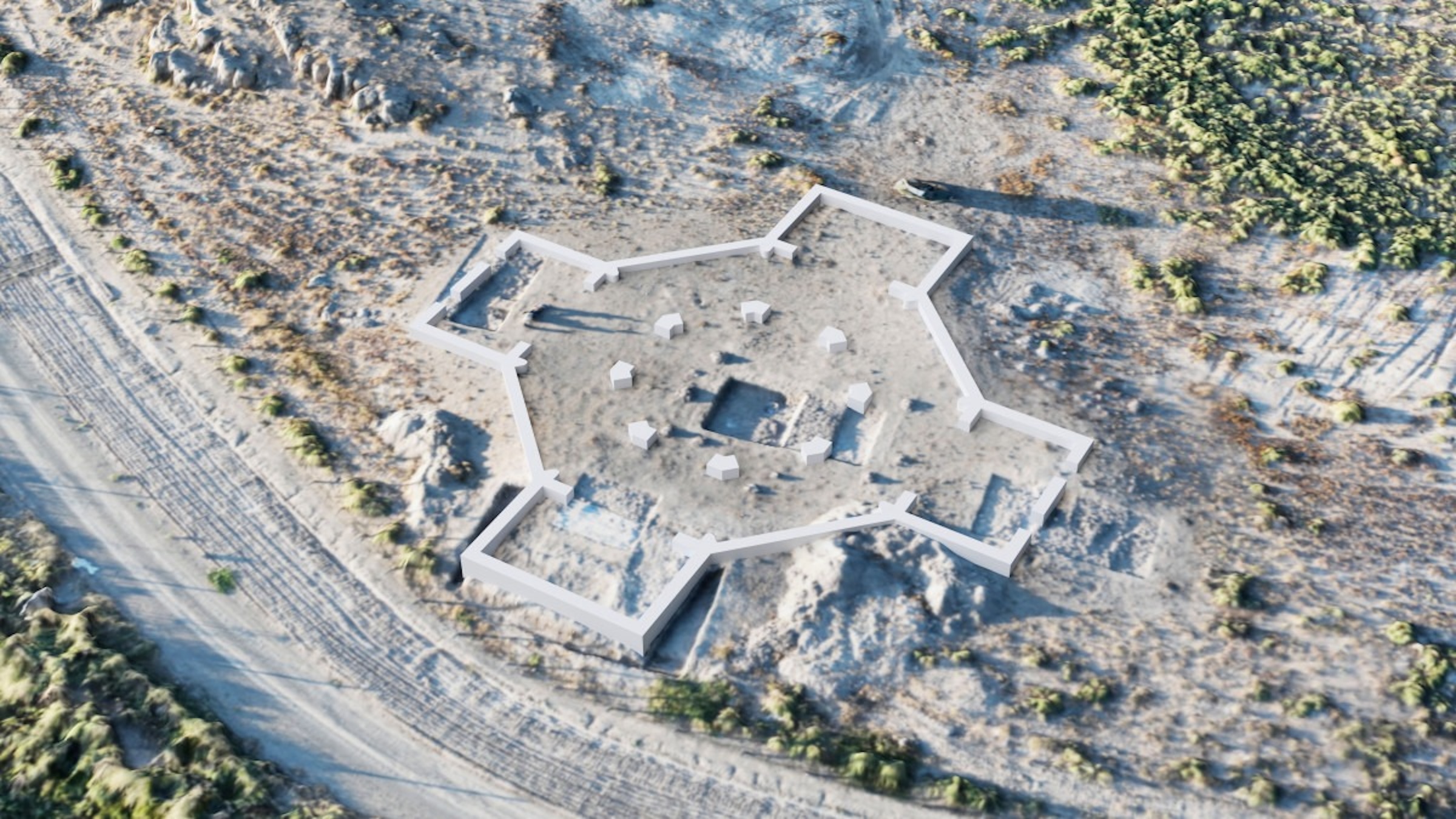A team of German and Armenian archaeological researchers recently excavated the ruins of what’s said to be the oldest known Christian church in Armenia in the ancient city of Artaxata. The church has been dated to the fourth century, with project co-director Achim Lichtenberger calling it “sensational evidence for early Christianity in Armenia.”
Lichtenberger and Torben Schreiber from the University of Münster in Germany are co-leading the project with Mkrtich Zardaryan and Hayk Gyulamiryan from the National Academy of Sciences of Armenia. Dubbed the Armenian-German Artaxata Project, the archaeological endeavor began in the historically significant capital of the Kingdom of Armenia in 2018. The team also includes specialists on materials such as roof tiles, marble, pottery, human and animal bones, as well as experts in dendrochronology, radiocarbon dating, and archaeobotany.
The researchers discovered that the church had an octagonal layout with cruciform extensions. “Octagonal churches were unknown here until now, but we are very familiar with them from the Eastern Mediterranean region, where they first appeared in the fourth century AD,” Zardaryan said in a statement about the discovery.

In an email to Hyperallergic, Lichtenberger explained that the site of the church was identified during a surface survey in 2023, noting that the team began excavating in the south exedra and taking radiocarbon samples. The church has since been measured at approximately 98 feet (~30 meters) in diameter, equipped with a simple mortar floor and terra cotta tiles.
“The full extent of the octagonal plan became apparent after we undertook magnetic prospections in spring 2024 with a Berlin-based company,” he continued. “The excavations that we then undertook in September and October 2024 proofed the magnetic data and provided us with further information on the identification as a church.”
The team also found samples of marble, suggesting that the material had been imported from the Mediterranean to lavishly decorate the structure. Additionally, the team came across some wooden platforms that have been radiocarbon dated to the mid-fourth century.

The church was found merely a stone’s throw from the highly visited Khor Virap monastery, which once imprisoned the founder of the Armenian Apostolic Church, Gregory the Illuminator. Gregory converted the Armenian king Tiridates III to Christianity in Artaxata in 301 CE, making Armenia the first Christian nation in the world.
“The building was heavily (probably intentionally) ruined and therefore we found only little of the original inventory,” Lichtenberger explained, saying that mostly roof tiles, beams, nails, and the marble decoration were among the major object finds onsite.
Research and excavations are still ongoing as the team seeks to discover to whom the church was dedicated.
The discovery comes as international organizations sound the alarm over mass destruction of Armenian cultural heritage in Artsakh (also known as Nagorno-Karabakh) since the Azerbaijani regime forced more than 100,000 ethnic Armenians from their homeland. Churches, places worship, cemeteries, monuments, and other landmarks are among the targets as the regime seeks to erase records of Armenian culture and spirituality.

